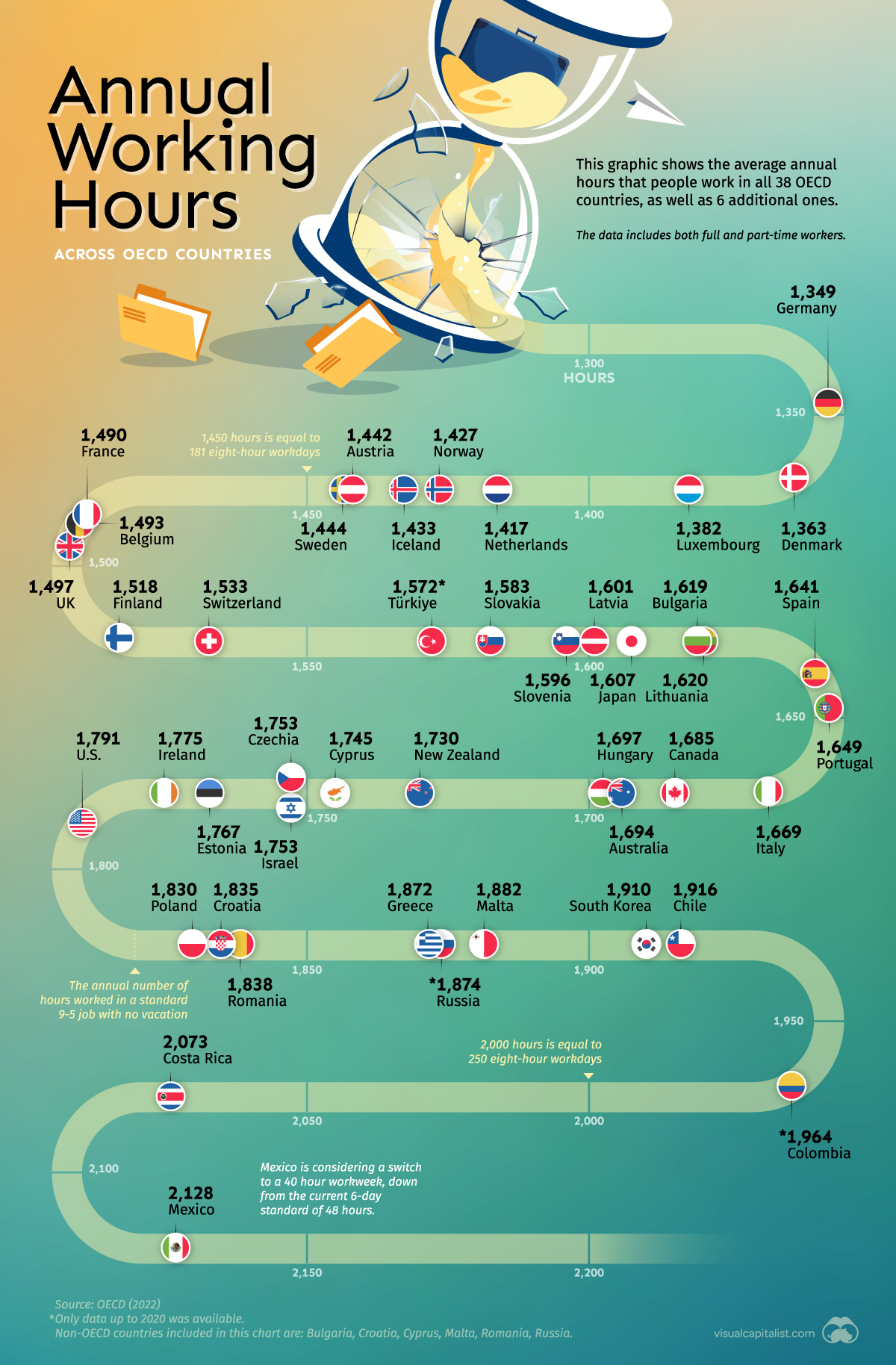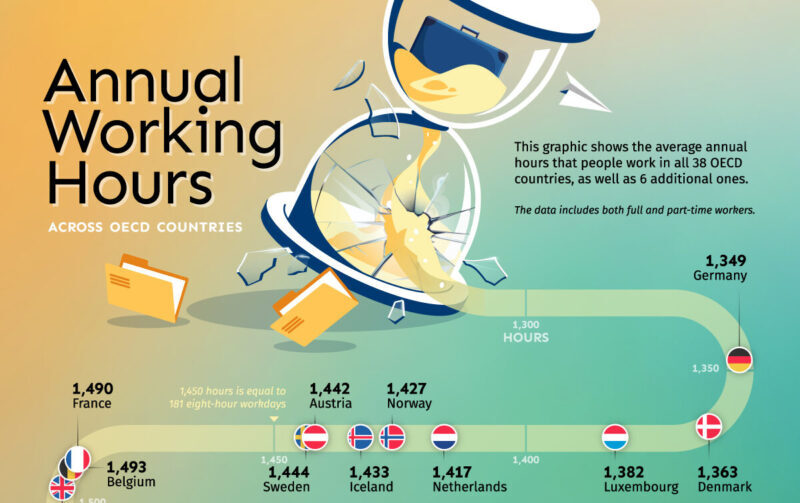
Comparing the number of hours people work in different countries can provide insight into cultural work norms, economic productivity, and even labor laws.
This article was written by Marcus Lu and originally published by Visual Capitalist.
With this in mind, we’ve ranked OECD countries (plus a few others) based on their average annual hours worked. Note that this data includes both full-time and part-time workers.
Data and Highlights
The data we sourced from OECD is listed in the table below (for the top 10). All figures are as of 2021 (latest available), with the exception of Colombia, Russia, and Türkiye which are as of 2020.
*Non-OECD country
At the top is Mexico, where the average worker clocks over 2,000 hours per year. This reflects the country’s labor dynamics, which typically involves a six-day workweek. For context, 2,128 hours is equal to 266 eight-hour workdays.
The only other country to surpass 2,000 annual hours worked per worker is Costa Rica, which frequently tops the World Economic Forum’s Happy Planet Index (HPI). The HPI is a measure of wellbeing, life expectancy, and ecological footprint.
Looking at the other end of the list, the two countries that work the fewest hours are Germany and Denmark. This is reflective of the strong labor laws in these countries as well as their emphasis on work-life balance.
For example, the German Working Hours Act (Arbeitszeitgesetz) states that daily hours of work may not exceed eight hours. Days can be extended to 10 hours, but only if it averages out to eight hours per working day over a six-month period.
Working fewer hours doesn’t mean that a country is becoming less productive, though. Germany is known for its high value industries like automotive and pharmaceuticals, where robotics and other technologies can greatly enhance productivity.
This is supported by GDP per capita, in which Germany has grown substantially since 2000.
Limitations of this Data
A limitation of this dataset is that it aggregates both full-time and part-time workers. This means that in a country like Japan, where almost 40% of the workforce is non-regular (part-time, contract, etc.), the average figure could be skewed downwards.
Japan is known for its grueling office culture, and it’s likely that many workers are logging significantly more hours than the 1,607 figure reported.


 Mexico
Mexico Costa Rica
Costa Rica Colombia
Colombia Chile
Chile South Korea
South Korea Malta*
Malta* Russia*
Russia* Greece
Greece Romania*
Romania* Croatia*
Croatia*


